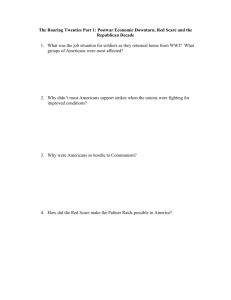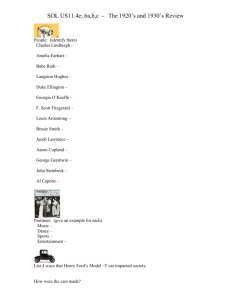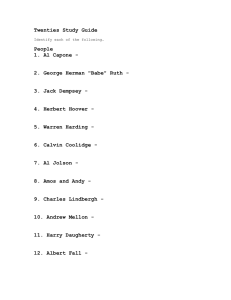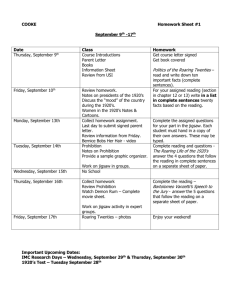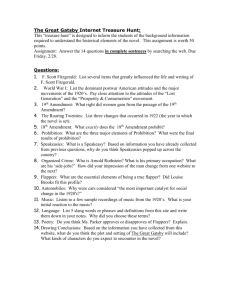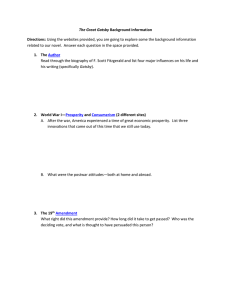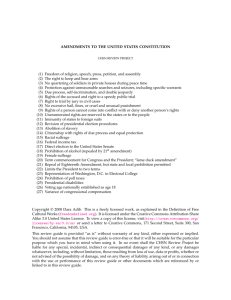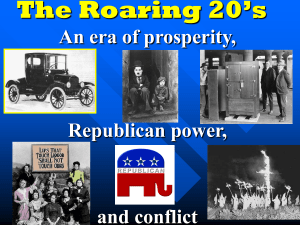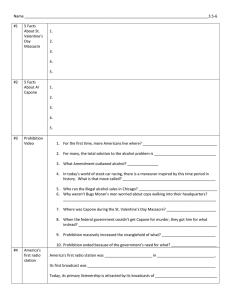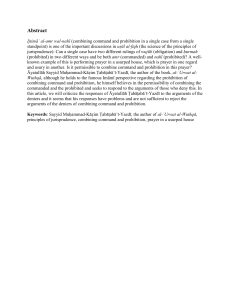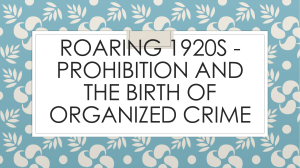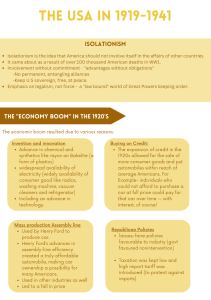Roaring Twenties and Depressing Thirties Study-Guide (Study your 20s/30s dictionary notes-project!)
advertisement
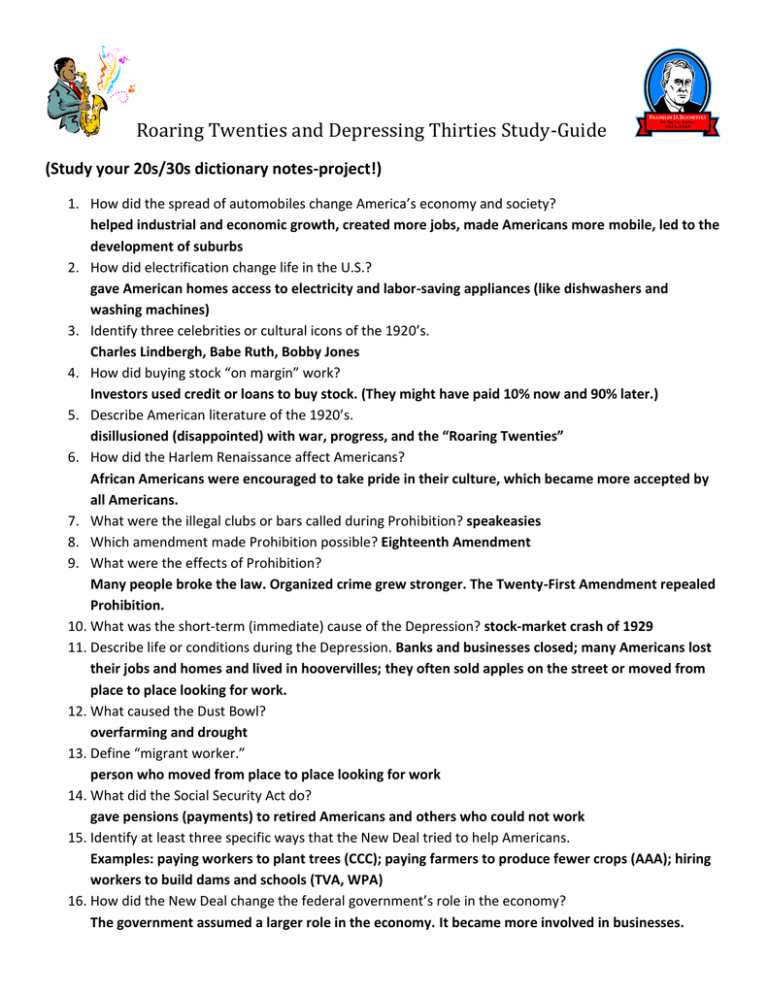
Roaring Twenties and Depressing Thirties Study-Guide (Study your 20s/30s dictionary notes-project!) 1. How did the spread of automobiles change America’s economy and society? helped industrial and economic growth, created more jobs, made Americans more mobile, led to the development of suburbs 2. How did electrification change life in the U.S.? gave American homes access to electricity and labor-saving appliances (like dishwashers and washing machines) 3. Identify three celebrities or cultural icons of the 1920’s. Charles Lindbergh, Babe Ruth, Bobby Jones 4. How did buying stock “on margin” work? Investors used credit or loans to buy stock. (They might have paid 10% now and 90% later.) 5. Describe American literature of the 1920’s. disillusioned (disappointed) with war, progress, and the “Roaring Twenties” 6. How did the Harlem Renaissance affect Americans? African Americans were encouraged to take pride in their culture, which became more accepted by all Americans. 7. What were the illegal clubs or bars called during Prohibition? speakeasies 8. Which amendment made Prohibition possible? Eighteenth Amendment 9. What were the effects of Prohibition? Many people broke the law. Organized crime grew stronger. The Twenty-First Amendment repealed Prohibition. 10. What was the short-term (immediate) cause of the Depression? stock-market crash of 1929 11. Describe life or conditions during the Depression. Banks and businesses closed; many Americans lost their jobs and homes and lived in hoovervilles; they often sold apples on the street or moved from place to place looking for work. 12. What caused the Dust Bowl? overfarming and drought 13. Define “migrant worker.” person who moved from place to place looking for work 14. What did the Social Security Act do? gave pensions (payments) to retired Americans and others who could not work 15. Identify at least three specific ways that the New Deal tried to help Americans. Examples: paying workers to plant trees (CCC); paying farmers to produce fewer crops (AAA); hiring workers to build dams and schools (TVA, WPA) 16. How did the New Deal change the federal government’s role in the economy? The government assumed a larger role in the economy. It became more involved in businesses.
